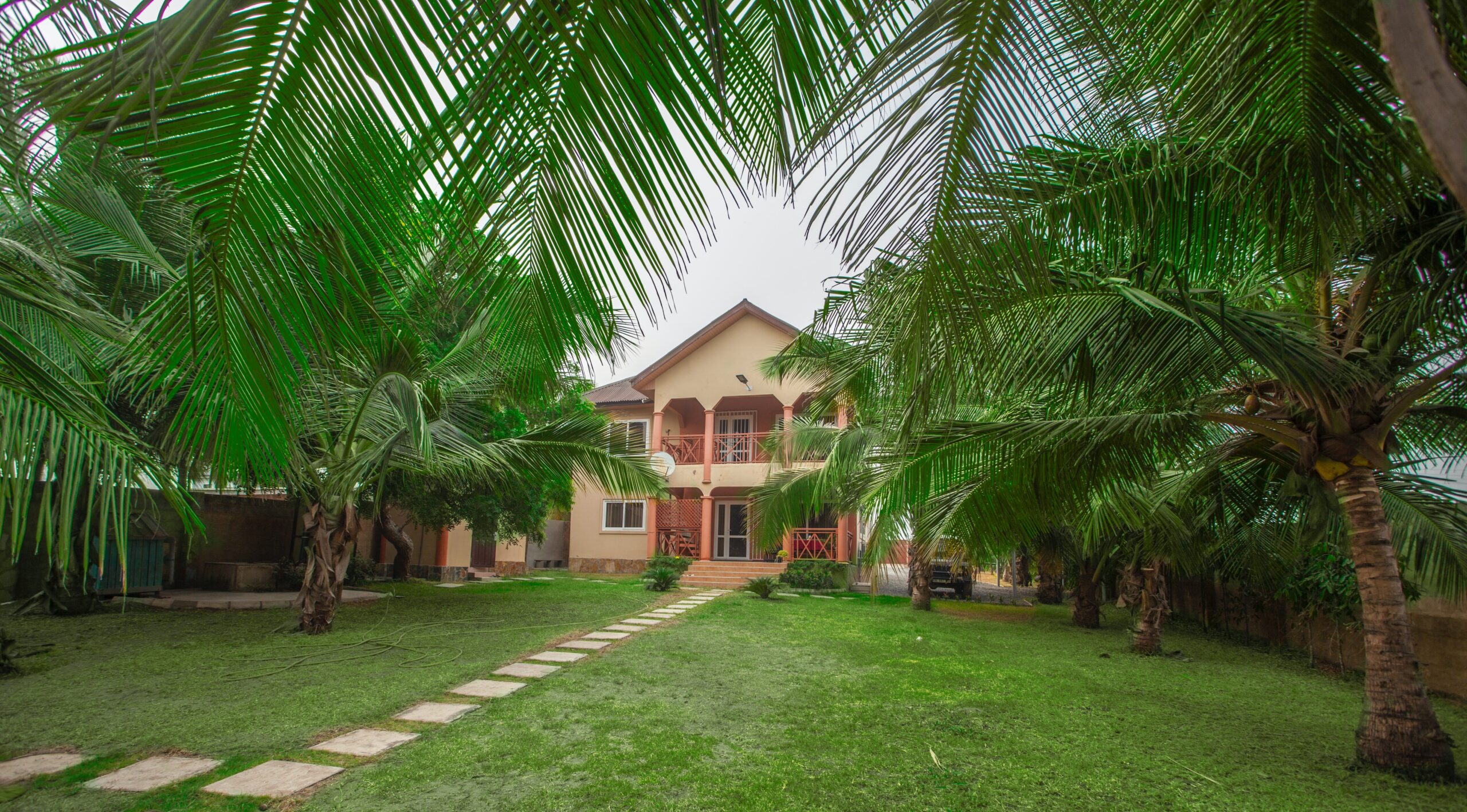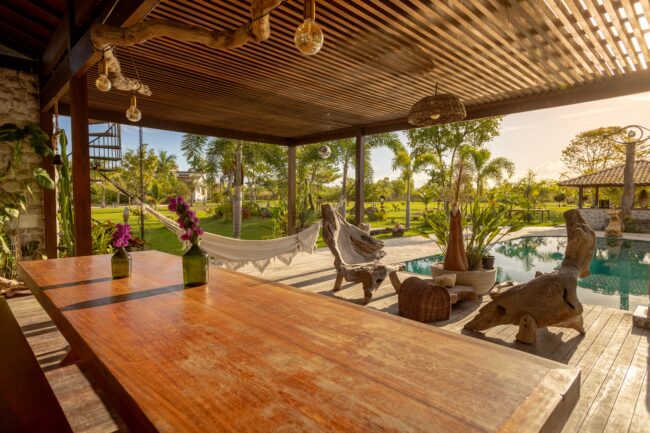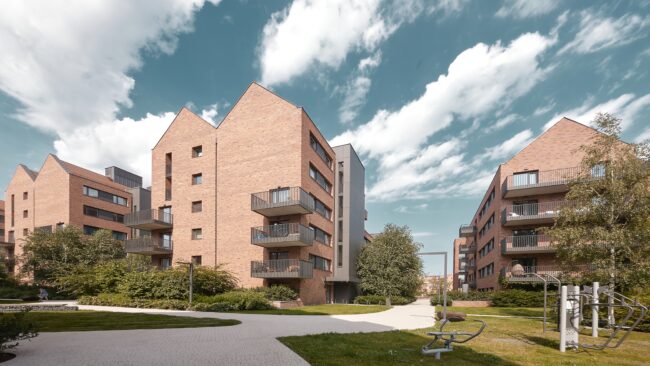How Many Rental Properties Do You Need To Make $100k a Year? A Comprehensive Guide
Earning $100,000 annually from rental properties is an enticing goal for many real estate investors and can be achievable through careful planning and strategy. Rental properties can generate income through monthly rents and, when managed efficiently, provide a stable and passive source of revenue.
But the number of properties needed to reach this milestone depends on several factors, including:
- location
- type of investment
- amount of capital invested
In this article, we’ll discuss the key components that contribute to earning $100,000 annually from rental properties and provide insights on how to plan your investment portfolio accordingly.
Key Takeaways
- A strategic approach to real estate investing is important in achieving a $100,000 annual income from rental properties.
- The number of properties required depends on factors like location, type of investment, and capital invested.
- Balancing a diversified portfolio and considering market dynamics is essential for maximizing returns.
Why Owning Rental Properties is a Great Way To Build Wealth
Rental properties are a popular choice for those seeking to build wealth and generate passive income. By purchasing an investment property, investors can enjoy monthly cash flow and potential long-term appreciation driven by the real estate market.
Real estate investing, especially in residential property, offers various benefits. One popular one is that they provide a stable source of cash flow through rent payments from tenants. These payments allow investors to cover their operational expenses, such as mortgage payments, maintenance costs, property taxes, and insurance.
As investors hold onto the property, they can also see gains from property value appreciation, which can increase their net worth over time.
The Real Estate Market
The real estate market plays a pivotal crucial role in the profitability of rental property investment. Factors such as location, population growth, local economy, and housing demand can significantly impact an investment’s performance.
In the real estate industry, investors can choose from various types of residential properties, including:
- single-family homes
- multi-family homes
- condominiums
- apartments
Related video:
Each property type has unique advantages and challenges that investors must carefully weigh before deciding. For example, single-family homes may be easier to manage and maintain than multi-family properties but may have lower cash flow potential.
Rental Property Metrics
An essential aspect of managing a rental property investment is understanding the right metrics to analyze the performance of the investment.
Critical real estate investment metrics include:
- cash flow
- cash-on-cash return
- capitalization rate (cap rate)
- internal rate of return (IRR)
Property Management
When investing in rental properties, investors should also be prepared to handle the responsibilities of being landlords. This includes finding and screening tenants, handling maintenance and repairs, and dealing with potential legal and regulatory issues.
Some real estate investors hire property management companies to handle these tasks, allowing them to focus on other aspects of their real estate investment journey.
Generating Income from Rental Properties
To make $100,000 annually from rental investments, it’s essential to focus on factors such as cash flow, monthly rent, and gross rental income.
| Key Term | Description | Strategies to Achieve $100,000 Annual Income |
|---|---|---|
| Cash Flow | The net amount of money flowing in and out of a rental property. It encompasses both income and expenses. | Ensure income generated exceeds expenses to maintain a positive cash flow. Minimize costs and manage properties efficiently. |
| Passive Income | Income earned on a continuous basis with minimal effort required from the investor. | Invest in properties with consistent rental demand to ensure a steady flow of income with minimal landlord involvement. |
| Monthly Rent | The primary source of income for rental properties paid by tenants. | Opt for properties that can command higher rent. Ensure the rent aligns with market rates and make improvements that cater to tenant demands. |
| Gross Rental Income | Total revenue from rental properties before deducting expenses. | Maximize occupancy rates and minimize vacancy periods. Regularly review and adjust rents to reflect market conditions. |
By focusing on these factors and practicing efficient property management, investors can create a reliable and lucrative source of income from rental properties.
However, it is important to remember that making a substantial income from rental properties requires a significant initial investment, ongoing maintenance, and the ability to navigate market fluctuations.
Don’t Miss Any Updates. Each week I’ll send you advice on how to reach financial independence with passive income from real estate.
Sign up for my newsletterHow Many Rentals Do You Need to Make $100k Annually?
Good deals play a significant role in reaching the target income of $100k per year. Investors should focus on acquiring properties below market value and in markets with strong rental demand, increasing the chances of generating higher returns.
A high-income earner may be able to invest a lot of money upfront, which allows them to acquire properties that are cash flow positive from the beginning. These investors can reach their $100k annual income target with fewer properties.
On the other hand, those who cannot invest as much money upfront may need more properties and much time to achieve their goal.
The Road to Earning $100k Annually through Rental Properties
The real estate market has witnessed significant fluctuations, with home rental and purchase prices experiencing a notable rise in the past year. Currently, data suggests that the median rent in the United States hovers around $2,000 per month.
Pay With Zero Debt
If we were to consider the median rent solely, here’s a basic breakdown:
Rental Income Breakdown Table
| Number of Properties | Monthly Rent (per property) | Annual Rent (per property) | Total Annual Rent |
|---|---|---|---|
| 1 | $2,000 | $24,000 | $24,000 |
| 2 | $2,000 | $24,000 | $48,000 |
| 3 | $2,000 | $24,000 | $72,000 |
| 4 | $2,000 | $24,000 | $96,000 |
| 5 | $2,000 | $24,000 | $120,000 |
| 6 | $2,000 | $24,000 | $144,000 |
| 7 | $2,000 | $24,000 | $168,000 |
| 8 | $2,000 | $24,000 | $192,000 |
Key Points:
- Renting out a single property at $2,000 per month provides an annual income of $24,000.
- To reach or surpass $100,000 in rental income annually, you’d need at least 5 properties.
- With eight properties, you can potentially earn up to $192,000 annually.
This calculation is based on the premise that all properties are bought without financing, thereby eliminating mortgage or interest payments from the equation.
While there is no one-size-fits-all answer to the number of properties required, some estimates suggest that owning at least 8-10 properties, assuming they are owned free and clear, can generate $100k in annual profit.
However, if the properties have mortgages, the number may need to be higher depending on the monthly mortgage payments and other expenses.
Pay With Financing
The equation becomes more complex if you don’t pay cash for your rentals and instead opt for financing. Let’s break down the numbers using an example:
Let’s say you put down 20% for each property purchase and finance the rest. If the median property purchase price is $250,000, your down payment would be $50,000. The remaining $200,000 would be financed.
For simplicity, let’s assume a 4% interest rate on a 30-year mortgage, which results in a monthly payment of about $954.
Now, from your $2,000 rent:
Deductions:
- Mortgage payment: $954
- Taxes
- HOA Fees
- Homeowners Insurance Premiums
- $150-300 per Month for Future Repairs
For this example, if Taxes, HOA Fees, Homeowners Insurance, and Repairs sum up to $600 per month, then:
Total Monthly Deductions = $954 (mortgage) + $600 (other expenses) = $1,554 Monthly Net Profit = $2,000 (rent) – $1,554 (expenses) = $446
To make $100,000 annually, you’d need:
$100,000 / ($446 * 12 months) ≈ 18.7 or at least 19 rental properties.
Summary Table:
| Payment Method | Number of Rentals to Earn $100k/yr | Deductions Per Rental | Net Profit Per Rental |
|---|---|---|---|
| Cash | 8 | Variable | $2,000 – Variable |
| Financing | 19 | $1,554 | $446 |
Note: The table provides general figures based on the given example and assumptions. Actual numbers may vary based on location, property type, and other expenses. Always consult with a financial advisor or real estate professional for specific advice.
In pursuit of financial freedom, rental property investors should focus on the following factors:
- Finding good deals and buying properties below market value
- Investing in markets with high rental demand
- Properly managing properties to maximize rental income and minimize expenses
- Utilizing appropriate financing strategies to optimize cash flow and build equity
3 Types of Rental Properties
Investors should consider the various types of properties available when aiming to generate $100k annually through rental properties. Each has unique characteristics, and understanding the pros and cons helps make a well-informed decision.
#1. Single-Family Homes
Single-Family Homes are residential properties designed to accommodate one family. Investors often choose single-family rentals due to their lower entry costs and easier management compared to other property types.
These typically have stable tenant occupancy, as families often stay longer in one place. However, single-family rentals may produce relatively lower rental income compared to multi-family or commercial properties.
#2. Multi-Family Homes
Multi-Family Homes include duplexes, triplexes, and apartment buildings. These properties house multiple tenants, potentially offering higher cash flow and a more diversified income stream.
Multi-family homes may have higher property management costs, but economies of scale can mitigate the impact. Choosing them can be more complex due to financing and regulations but they can be an excellent option for reaching the $100k goal.
#3. Commercial Real Estate
Commercial Real Estate covers properties primarily used for business purposes, such as retail stores, offices, warehouses, and industrial spaces. Investing in commercial properties often yields higher rental income and longer lease periods compared to residential properties.
However, the entry costs can be higher, and management can be more challenging. When considering this type of property, it is essential to understand local market trends and business needs.
Investing Strategies and Concepts in Real Estate
To make $100,000 annually from rental properties, investors need to employ effective investment strategies and understand key concepts, such as cap rate and the BRRRR strategy.
Buy, Rehab, Rent, Refinance, Repeat
One popular investment strategy is the Buy, Rehab, Rent, Refinance, Repeat (BRRRR) method. This involves purchasing a property at a discount, rehabilitating it to increase its value, renting it out to tenants, refinancing the property for a higher amount, and repeating the process with subsequent properties.
By leveraging the BRRRR strategy, investors can grow their portfolio while minimizing out-of-pocket expenses.
Cap Rate
The capitalization rate, or cap rate, is the annual net operating income divided by the property’s purchase price or market value. A higher cap rate indicates a more profitable investment and is a useful tool for comparing different rental properties. It’s important to note that cap rates vary by market, property type, and overall risk.
1% Rule
Several rules of thumb can help investors make informed decisions when investing in real estate. One common guideline is the 1% rule, which states that the monthly rent generated by a property should be at least 1% of the property’s purchase price.
This rule enables investors to estimate their potential cash flow and determine whether a property is a good investment.
50% Rule
Another rule to consider is the 50% rule, which suggests that operating expenses will consume approximately 50% of the rental income. This estimate can help investors plan for expenses, such as maintenance, property management, and vacancies
By understanding the key concepts and rules of thumb associated with real estate investing, investors can develop an effective strategy for reaching their goal of earning $100,000 annually.
Don’t Miss Any Updates. Each week I’ll send you advice on how to reach financial independence with passive income from real estate.
Sign up for my newsletterBalancing Portfolio and Diversification
One of the essential components of building wealth through rental properties is maintaining a balanced and diversified portfolio. This strategy helps to mitigate risks and to optimize returns.
Diversification aims to spread your investments across various asset types and industries to ensure your portfolio’s performance isn’t solely dependent on one asset type. In this regard, rental properties can be viewed as a solid addition to an investor’s other existing investments, such as stocks, bonds, and mutual funds.
For business owners and professionals engaged in side hustles, real estate investments can provide a stable income stream, supplementing other income sources while requiring little work relative to more labor-intensive pursuits. The rental properties might serve as an excellent idea for those looking for extra cash to reinvest in their ventures.
When considering making a significant investment in rental properties, one of the first questions an investor should ask is how to balance their portfolio appropriately. This can be achieved through a mix of traditional investments, like stocks and bonds, along with alternative investments, such as peer-to-peer lending platforms. By incorporating real estate, mutual funds, and peer lending into a portfolio, investors can maintain a more diversified and stable investment strategy.
Frequently Asked Questions
What is the average return on investment for rental properties?
The average return on investment (ROI) for rental properties varies depending on factors like location, property type, and market conditions. Generally, a good ROI for rental properties falls between 6% and 12%.
How much capital is needed to generate 100k from rental properties?
The amount of capital needed to generate $100,000 in annual income from rental properties depends on factors like cash flow, financing, and property types. For example, if you have an average cash flow of $1,000 per month per property, you would need approximately 8-10 properties to achieve $100,000 in annual income. This does not take into account financing costs and other variables.
What factors influence rental property profitability?
Many factors influence rental property profitability, such as local market conditions, vacancy rates, property management efficiency, property type, financing terms, and property condition. It’s essential for investors to thoroughly analyze these factors when selecting properties for their portfolio to maximize profitability and reduce risks.
What strategies can be used to achieve the 100k income goal?
Several strategies to achieve a $100,000 annual income goal through rental properties include purchasing properties with strong cash flow, targeting up-and-coming neighborhoods, implementing cost-saving property management practices, considering multi-family properties, and leveraging financing options for faster portfolio growth. Diversifying investment properties can also reduce risk and create opportunities for growth.
How does the 1% rental investment rule work?
The 1% rental investment rule is a general guideline suggesting investors should aim for a property with a monthly rent of at least 1% of the purchase price. For example, if a property is purchased for $100,000, the monthly rent should be at least $1,000.
Are certain types of rental properties more profitable?
The profitability of rental properties depends on factors like location, market demand, and property type. Single-family homes, multi-family properties, and commercial rentals can all be profitable investment options. Researching local market trends, focusing on properties with high demand and low supply, and understanding the investor’s own skill set can help determine the most profitable property type for their portfolio.
Join the Passive Investors Circle



